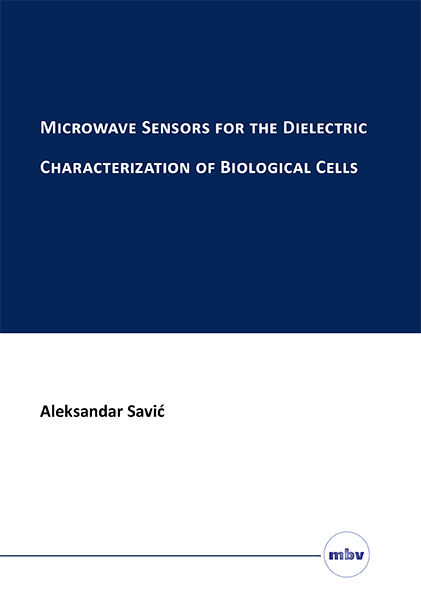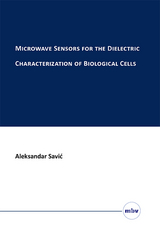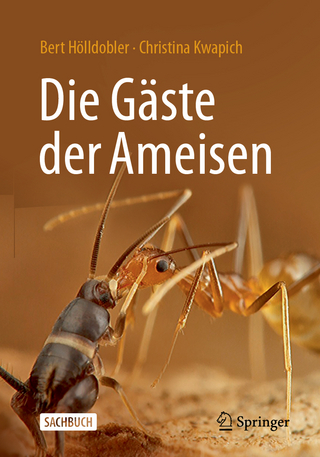Microwave Sensors for the Dielectric Characterization of Biological Cells
Seiten
2023
|
1. Aufl.
Mensch & Buch (Verlag)
978-3-96729-211-4 (ISBN)
Mensch & Buch (Verlag)
978-3-96729-211-4 (ISBN)
This work aims for single cell characterization. For this purpose, a two-step calibration technique is developed. It is optimized for various technologies like open-ended coaxial lines, printed circuit boards, and microtechnology. In principle, it is based on impedance measurements with a single reference liquid for calibration and is capable of extracting the broadband complex permittivity. The advantages are simplicity, robustness, and scalability down to low volumes. All of the sensors for single cell measurements developed in this work are evaluated with this method. As widely done in literature for cell measurements, microfluidic sensors are developed and produced with microtechnology. Two of the sensors are planar with different geometries. One is a one-port design with three electrodes, the other a two-port version with two electrodes. The electrodes of both versions have a physical contact with one side of the cell. In combination with a mechanical cell trap, they are shown to be capable of measuring single cells and extracting their permittivity. When measuring different cell lines and pathological states, different permittivity footprints are discovered. Measured are living and dead cells from the CHO and human liver cancer HepG2 cell lines. The living HepG2 cells show a lower permittivity compared to the CHO ones, thus making the cells distinguishable. Dead cells of both lines yield quite similar results, but higher values than the living variants. A novel measurement approach at microwave frequencies is introduced. A simple parallel plate capacitor is expanded with the use of a guard electrode to avoid issues with fringing fields. It relies on a design with high impedances and properly positioned electrodes. While this method is known at lower frequencies, its implementation at microwave frequencies is developed here. Its capabilities are demonstrated in simulation and with a printed circuit experiment as a scaled version. With this design, the cell can be illuminated homogeneously through its center. Only this homogeneous field contributes to the extracted permittivity. A microchip version of the sensor is presented, along with the results of CHO cell measurements.
| Erscheinungsdatum | 19.04.2024 |
|---|---|
| Verlagsort | Berlin |
| Sprache | englisch |
| Maße | 148 x 210 mm |
| Gewicht | 350 g |
| Themenwelt | Naturwissenschaften ► Biologie ► Humanbiologie |
| Technik ► Elektrotechnik / Energietechnik | |
| Technik ► Nachrichtentechnik | |
| Schlagworte | Biological Cells • cells from the CHO • dielectric • dielectric characterization • Dielectric Characterization of Biological Cells • Electrodes • expanded plate capacitor • extracting permittivity • extracting the broadband complex permittivity • guard electrode • homogeneously cell-illumination • human liver cancer HepG2 cell • measuring single cells • microchip version • Microtechnology • microwave frequencies • Microwave Sensors • one-port design • open-ended coaxial lines • permittivity footprints • Printed Circuit Boards • single cell characterization • two-port design |
| ISBN-10 | 3-96729-211-8 / 3967292118 |
| ISBN-13 | 978-3-96729-211-4 / 9783967292114 |
| Zustand | Neuware |
| Haben Sie eine Frage zum Produkt? |
Mehr entdecken
aus dem Bereich
aus dem Bereich
Wie Myrmecophile mit ihren Wirten interagieren
Buch | Softcover (2023)
Springer (Verlag)
69,99 €
produktiv sein ohne Stress – und mehr vom Leben haben
Buch | Softcover (2023)
dtv Verlagsgesellschaft
18,00 €
23 Techniken, um Stress abzubauen, Negativspiralen zu unterbrechen …
Buch | Softcover (2023)
FinanzBuch Verlag
18,00 €




